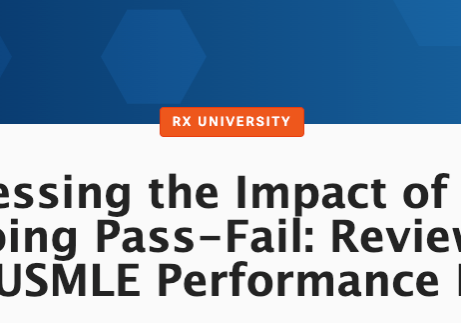This post is part of a series called “Med School Done Right,” which will look at not just succeeding in medical school in the narrow terms of “getting good grades,” but at shaping the kind of experiences you want to have during these (usually) four very important years of your life.
In my last post, I wrote about a metaphor for time management posed by a professor who went on to explain that the lesson was: (1) if you don’t fit the big “rocks” in first, you never will (his explicit point) and (2) that you have more free time than you think (the implicit point, driven home by his demonstration). Here’s how and why I think his explicit message of “fit big rocks first, and then fit everything else later” doesn’t work, especially for medical students.
First, the example demonstrates that we do have space in between our big goals, but if we actually pursue them with the intent of doing “our best,” then we don’t have room for three more rounds of gravel, sand, and water to be added to our lives. Why? Because big goals aren’t rocks. The time commitment and mental energy necessary to achieve something meaningful and difficult is not fixed, like the size and shape of a stone.
What if you had the “big rock” of developing a deep understanding of a certain number of First Aid for the USMLE Step 1 pages every day? Sounds like a concrete goal, right? You should be able to plop it down into your calendar and then start fitting in the smaller things you have on your list. Well…what about when a certain concept takes longer than the time you allotted on your schedule? You’ll have to keep going with studying instead of taking 30 minutes to practice violin, 30 minutes to meditate, 10 minutes to juggle, and 10 minutes to talk to friends, etc. The problem is, the already difficult experience of learning something new is compounded by the mental stress of knowing that you have to get the content locked down before your scheduled smaller priorities or you’re behind. And having some of these smaller rocks in your life – which are inevitably more fun – provides you an excuse to quit early, sacrificing the quality of that big important rock…which brings me to my next point.
Having more than 2 or 3 priorities in your life that you are actively managing creates a cognitive overload when trying to balance them all. You can’t consciously keep them on your mind. And, yes, you can make a list every day, but even if you do that you’ll be pulled throughout the day by priorities that will very quickly make you feel emotionally torn and scattered, per the previous example. Having 1 or 2 big, difficult rocks to deal with each day – and nothing else – ensures that you actually do them and that you don’t feel incongruent or overwhelmed in the process. This leads me to my final and, perhaps, most important concept.
Even if a rocks à gravel à sand à water kind of life were possible, it’s not sustainable and can’t be enjoyable. As the visual demonstrates: you’re drowning, with literally no space to breathe.
 A more accurate and appropriate story would have been if the professor put a jar on the table like the one to the right and asked the same question: “Is this jar full?”
A more accurate and appropriate story would have been if the professor put a jar on the table like the one to the right and asked the same question: “Is this jar full?”
The class would see that there is plenty of space between all those baseballs and, with an intuitive sense that it wasn’t actually full, they would say, “No, you could fit plenty more stuff in there!”
The professor would then calmly remove half of the baseballs, close the lid, and say definitively, “Now, it is full.”
So the story is wrong; that’s the bad news. The good news is that if you really commit to just a few of the right kinds of rocks, almost everything else takes care of itself.
In my next post, I’ll explain what keystone habits and employee safety at a factory have to do with you rocking Step 1, being in great shape, and having fun with your friends.




